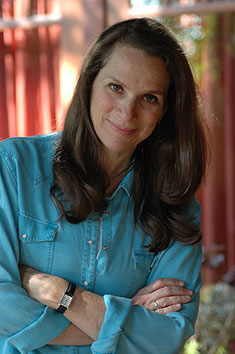Often, he will teach himself a procedure that he's heard described, without ever having read about it in a medical journal or having seen it done. The controversial selective terminations are one such example. He had heard about colleagues performing the procedure in San Francisco and New York and decided to try it himself after discussing it with a doctor who'd pioneered the technique. "I talked to somebody who gave me an idea of how it could be done," he says. "At that time, there was nothing published on the procedure. I thought of all the possible complications that could arise and saw the possible ways of preventing them."
In another case he improvised a technique in response to a crisis. An ultrasound picture of twins showed that one was twice the size of the other. The smaller twin had started bleeding into his brother through a shared placenta, causing the larger twin to swell and making his heart pump harder than necessary. The deteriorating condition of the infants led Tabsh to deliver the smaller one by Cesarean section and leave the other in the womb. As it turned out, only the larger twin survived, though Tabsh had guessed that the Cesarean delivery would save the smaller child's life and that the larger child was at greater risk. It was a never-before-attempted procedure. In fact, before performing the operation, Tabsh informed his patient that he had only practiced on sheep and other farm animals.
Colleagues regard all this with mixed feelings. While acknowledging that Tabsh is talented and energetic, some view his work with caution. "We're not removing a fetus from the uterus and leaving one in," says Dr. Lawrence Platt, professor of obstetrics and gynecology at USC, who questions Tabsh's evaluation of the risks and benefits in deciding how to handle the twins' problems.
"He is a bit of a wild man when it comes to doing things," says Dr. John Williams, formerly head of prenatal diagnosis at Cedars-Sinai Medical Center and now director of the privately run Prenatal Diagnostic Center in West Los Angeles. "If he sees something as being innovative, he pulls it off. Maybe he's just ahead of his time."
Tabsh is neither a politician nor a moral philosopher. His personal bent is to save every pregnancy he can. So he actively pursues "good outcomes." He sees himself as a "fetal advocate," even if, as in the case of a doomed multiple pregnancy, it means destroying presumably healthy fetuses to do so.
As obstetrical science moves closer to the ideal of guaranteeing every woman a perfect baby, Tabsh is viewed by many patients and doctors as a knight who will slay the dragon of uncertainty, replacing chance with choice; others say he is the dragon, a purveyor of runaway technology that has overtaken life's greatest miracle. Still others, in a time of rising malpractice premiums (obstetricians pay the highest rates in California, with perinatologists at the top of the list), say he's a saint; they're grateful that he takes on cases that most doctors can't or won't handle. A few days with him offers a glimpse into the fastest of medical fast lanes.
TALL, BROAD-SHOULDERED, sometimes darkly preoccupied, Tabsh strides down UCLA Medical Center's newly renovated hallways with a fierce intensity. After completing his obstetrics and gynecology residency at Yale Medical School in 1978, he came to UCLA for a two-year fellowship in perinatology and later received a tenured faculty appointment as associate professor. He looks at home here, having returned in January after three years in private practice.
In some ways, Tabsh's return to UCLA symbolizes the medical school's commitment to revitalize its sagging obstetrical service, which had ceased to be a leader in the field. In recent years, morale there had plummeted, and, says Pitkin, the department of obstetrics and gynecology was marked by a general sense of unrest. Tabsh, for one, gave up his tenured position--a rare move in academia--to pursue a private practice in 1986. But now, in addition to $1.2 million in physical refurbishments for patient care, efforts are under way to expand research and training opportunities. Certainly, Tabsh's being crowned with a full professorship by the university's chancellor in January is a harbinger of change.
But at the moment, Tabsh's concerns are far more immediate as he stands in his self-fashioned bullpen--between his patient, who is lying on an examining table, and his ultrasound machine. She is 32 weeks pregnant with twins and needs an amniocentesis immediately because she has started to go into premature labor.
This will not be a "tap" for genetic information but one to determine whether her babies' lungs are mature enough for birth. If not, she might be given drugs to forestall labor or steroids to promote lung development. In any case, the amniotic fluid will be analyzed for surfactant, a type of fat secreted by well-developed lungs.



